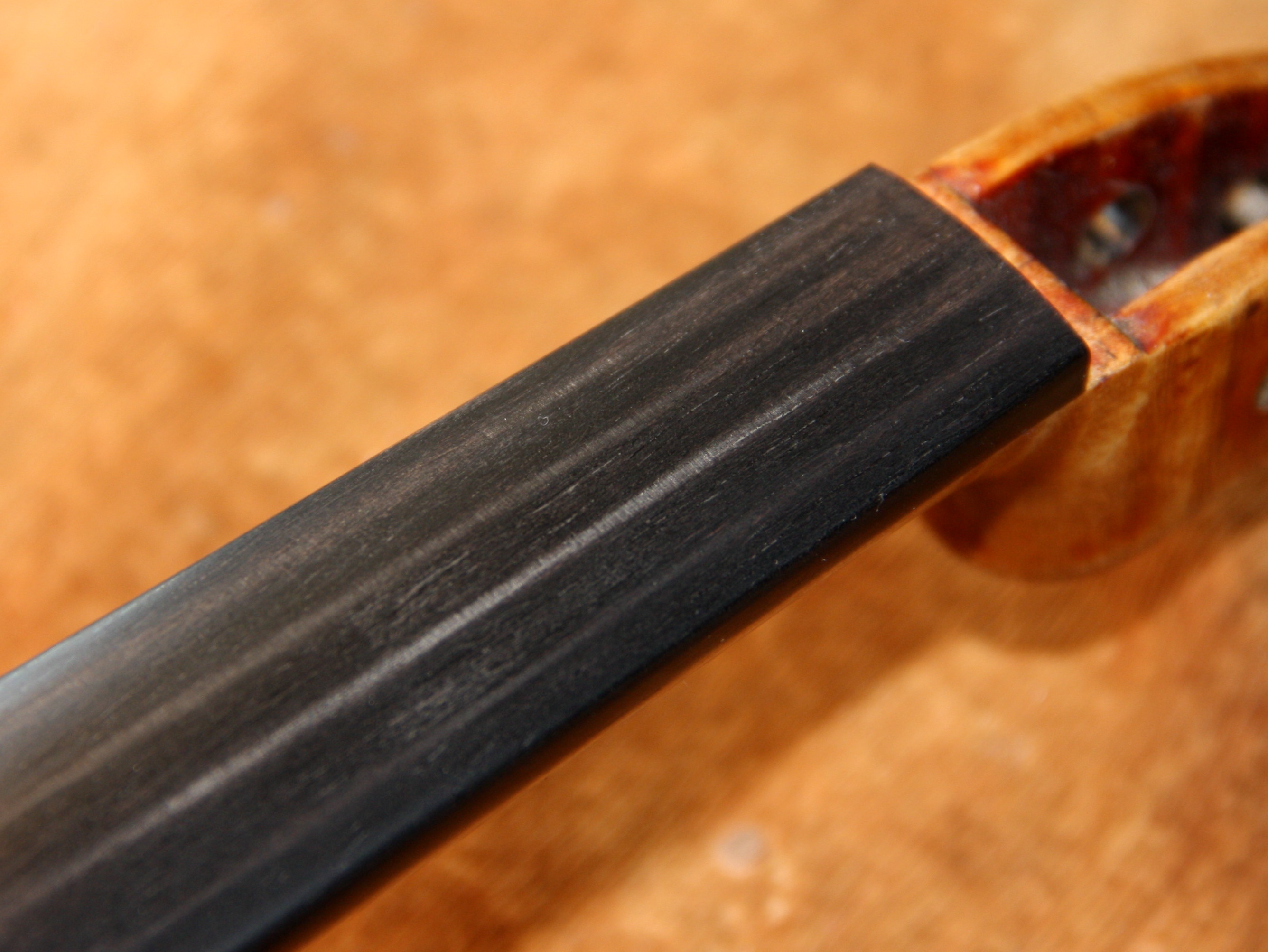The cobbler’s shoes and a tiny sculpture
December 2018
It was nine years ago that I finally got around to making a fiddle for myself. Being keen to get it done and using a model I was excited about, I made it very quickly and it is one of my favourite instruments, which I suppose is just as well since I see it all the time. But like the proverbial shoemaker who never gets to look after his own children’s’ shoes, I have done very little to it except changing the strings and making the sure the bridge stands upright.
Then last month, a friend who has had his new violin for just over a year, brought it back for me to lower the bridge and take some of the hollow out of the fingerboard. Many people think that if the strings are a bit too high, all you need to do is lower the bridge, and sometimes that is all that is necessary. Often, however, as the pressure of the strings pulls and bends the neck and fingerboard a little bit, the area around a fifth above the open string becomes hardest to push down. In this case the fingerboard needs to be reshot, removing wood particularly at the nut end to decrease the hollow along the length of the fingerboard.
As I was working on his fiddle, my friend had a go on mine, and commented that my violin felt just the same. I knew my strings were a bit too high, but, like the shoemaker, I had let it go. I finished my friend’s violin and he went away happy, but on the last working day before Christmas I thought I would tackle my own violin. Sure enough, the scoop along the fingerboard was too deep, and after nine years, the strings had worn grooves in the fingerboard, not excessively, but enough to warrant some attention.
Having shot the fingerboard, I replaced the nut, which was now too high because the fingerboard was thinner. The nut is a seemingly inconsequential piece of wood, but it is very important as it guides the strings in a gentle curve from over the fingerboard towards the pegs. Precision is necessary as the strings need to be correctly spaced, at the correct height, and they must be able to move smoothly in the grooves. Nowadays I need my glasses on to do this careful work, but getting all these shapes right actually makes a very pleasingly shaped piece of wood; indeed, my mentor from years ago called a nut a ‘tiny piece of sculpture.’
With the slightly lower bridge now in place, I am now reaping the benefits of my work, as I knew I would. So, if you are looking for a New Year’s resolution, have your instrument checked over, it might make your life and your playing just a little bit easier!


